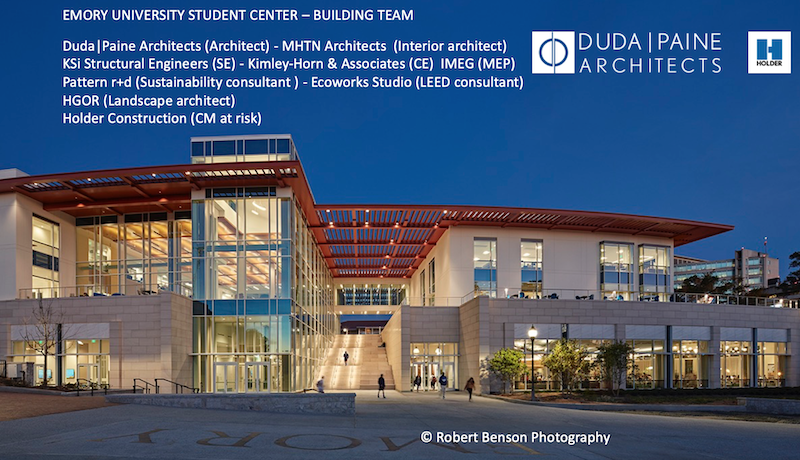Which U.S. cities will be the “life sciences innovation hubs” of the future? What has one designer learned about using modular building systems to build hotels? And what happens when students really get involved in the design of their university’s student center?
These are some of the topics that were addressed on the August 6 episode of “The Weekly,” the live streaming news and analysis program from Horizon TV.
Watch the episode on demand at: https://horizontv.bdcnetwork.com.
REPORT PINPOINTS THE NATION'S 'LIFE SCIENCES INNOVATION HUBS'
David Barista, Editorial Director of BD+C, talked with Audrey Symes, Research Director, Healthcare and Life Sciences with JLL, about the findings of the newly released “JLL 2020 U.S. Life Sciences Outlook.”

Audrey Symes, Research Director with JLL, will discuss the findings of the newly released “JLL 2020 U.S. Life Sciences Outlook.”
The report tracks the progress of up-and-coming life sciences innovation hubs across the U.S., and details the coming worldwide prescription drug boom and what it means for R&D-related facilities.
AWARD-WINNING EMORY UNIVERSITY STUDENT CENTER
Segment two presented the Emory University Student Center, the Platinum Award winner in the 2020 Building Design+Construction Building Team Awards - the competition’s highest honor. The student center is remarkable because Emory students participated in the early design discussions and had a crucial role in selecting the winning architecture firm in a 5-firm design competition.

The Building Team for the LEED Platinum Student Center at Emory University, Atlanta.
BD+C Executive Editor Robert Cassidy engaged in a lively conversation with recent Emory graduate Claire Dakhlia, LEED GA, who was among the many Emory students who participated in discussions with architects from the winning firm, Duda|Paine Architects (co-submitter with Holder Construction, the CM at risk), represented by Project Architect Scott Shell. Dr. Ben Perlman, Student Center Director, provides background on the university’s sustainability goals for this LEED Platinum facility.
HKS'S SPRINKLE ON MODULAR DESIGN FOR HOTELS
In our concluding segment, Tom Sprinkle, AIA, Principal and Design Director for HKS in San Francisco, talked with BD+C Senior Editor about HKS's deployment of modular design and construction in its hotel projects, especially how modular can sometimes solve a lot of problems, including tight schedules, confined jobsites, and construction costs.

Tom Sprinkle, AIA, leads HKS's work on modular hotel design.
HKS evaluated 15 modular building companies before it found the right choice. Sprinkle also unveils the qualities HKS looks for in its modular building supplier.
‘THE WEEKLY,’ PRESENTED EVERY THURSDAY AT 1 PM EASTERN
“The Weekly” is a production of Horizon TV, the online broadcast arm of SGC Horizon LLC, publishers of Building Design+Construction, Multifamily Design+Construction, Professional Builder, ProRemodeler, and Construction Equipment. The program is hosted by Tony Mancini, Principal—Group Director, SGC Horizon.
Related Stories
| Mar 11, 2011
Slam dunk for the University of Nebraska’s basketball arena
The University of Nebraska men’s and women’s basketball programs will have a new home beginning in 2013. Designed by the DLR Group, the $344 million West Haymarket Civic Arena in Lincoln, Neb., will have 16,000 seats, suites, club amenities, loge, dedicated locker rooms, training rooms, and support space for game operations.
| Feb 23, 2011
The library is dead, long live the library
The Society for College and University Planning asked its members to voice their thoughts on the possible death of academic libraries. And many did. The good news? It's not all bad news. A summary of their members' comments appears on the SCUP blog.
| Feb 11, 2011
Sustainable features on the bill for dual-building performing arts center at Soka University of America
The $73 million Soka University of America’s new performing arts center and academic complex recently opened on the school’s Aliso Viejo, Calif., campus. McCarthy Building Companies and Zimmer Gunsul Frasca Architects collaborated on the two-building project. One is a three-story, 47,836-sf facility with a grand reception lobby, a 1,200-seat auditorium, and supports spaces. The other is a four-story, 48,974-sf facility with 11 classrooms, 29 faculty offices, a 150-seat black box theater, rehearsal/dance studio, and support spaces. The project, which has a green roof, solar panels, operable windows, and sun-shading devices, is going for LEED Silver.
| Feb 11, 2011
Research facility separates but also connects lab spaces
California State University, Northridge, consolidated its graduate and undergraduate biology and mathematics programs into one 90,000-sf research facility. Architect of record Cannon Design worked on the new Chaparral Hall, creating a four-story facility with two distinct spaces that separate research and teaching areas; these are linked by faculty offices to create collaborative spaces. The building houses wet research, teaching, and computational research labs, a 5,000-sf vivarium, classrooms, and administrative offices. A four-story outdoor lobby and plaza and an outdoor staircase provide orientation. A covered walkway links the new facility with the existing science complex. Saiful/Bouquet served as structural engineer, Bard, Rao + Athanas Consulting Engineers served as MEP, and Research Facilities Design was laboratory consultant.
| Feb 11, 2011
A feast of dining options at University of Colorado community center, but hold the buffalo stew
The University of Colorado, Boulder, cooked up something different with its new $84.4 million Center for Community building, whose 900-seat foodservice area consists of 12 micro-restaurants, each with its own food options and décor. Centerbrook Architects of Connecticut collaborated with Denver’s Davis Partnership Architects and foodservice designer Baker Group of Grand Rapids, Mich., on the 323,000-sf facility, which also includes space for a career center, international education, and counseling and psychological services. Exterior walls of rough-hewn, variegated sandstone and a terra cotta roof help the new facility blend with existing campus buildings. Target: LEED Gold.
| Feb 11, 2011
Chicago high-rise mixes condos with classrooms for Art Institute students
The Legacy at Millennium Park is a 72-story, mixed-use complex that rises high above Chicago’s Michigan Avenue. The glass tower, designed by Solomon Cordwell Buenz, is mostly residential, but also includes 41,000 sf of classroom space for the School of the Art Institute of Chicago and another 7,400 sf of retail space. The building’s 355 one-, two-, three-, and four-bedroom condominiums range from 875 sf to 9,300 sf, and there are seven levels of parking. Sky patios on the 15th, 42nd, and 60th floors give owners outdoor access and views of Lake Michigan.
| Feb 11, 2011
Apartment complex caters to University of Minnesota students
Twin Cities firm Elness Swenson Graham Architects designed the new Stadium Village Flats, in the University of Minnesota’s East Bank Campus, with students in mind. The $30 million, six-story residential/retail complex will include 120 furnished apartments with fitness rooms and lounges on each floor. More than 5,000 sf of first-floor retail space and two levels of below-ground parking will complete the complex. Opus AE Group Inc., based in Minneapolis, will provide structural engineering services.
| Feb 11, 2011
Four-story library at Salem State will hold half a million—get this—books!
Salem State University in Massachusetts broke ground on a new library and learning center in December. The new four-story library will include instructional labs, group study rooms, and a testing center. The modern, 124,000-sf design by Boston-based Shepley Bulfinch includes space for 500,000 books and study space for up to a thousand students. Sustainable features include geothermal heating and cooling, rainwater harvesting, and low-flow plumbing fixtures.
| Jan 21, 2011
Primate research facility at Duke improves life for lemurs
Dozens of lemurs have new homes in two new facilities at the Duke Lemur Center in Raleigh, N.C. The Releasable Building connects to a 69-acre fenced forest for free-ranging lemurs, while the Semi-Releasable Building is for lemurs with limited-range privileges.
















